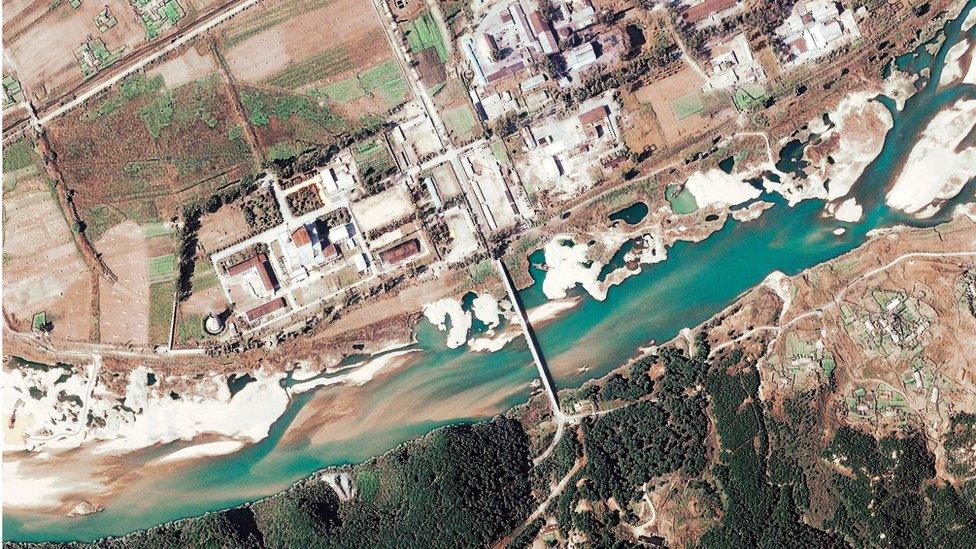Reality Check: Has North Korea become a greater threat?
- Published
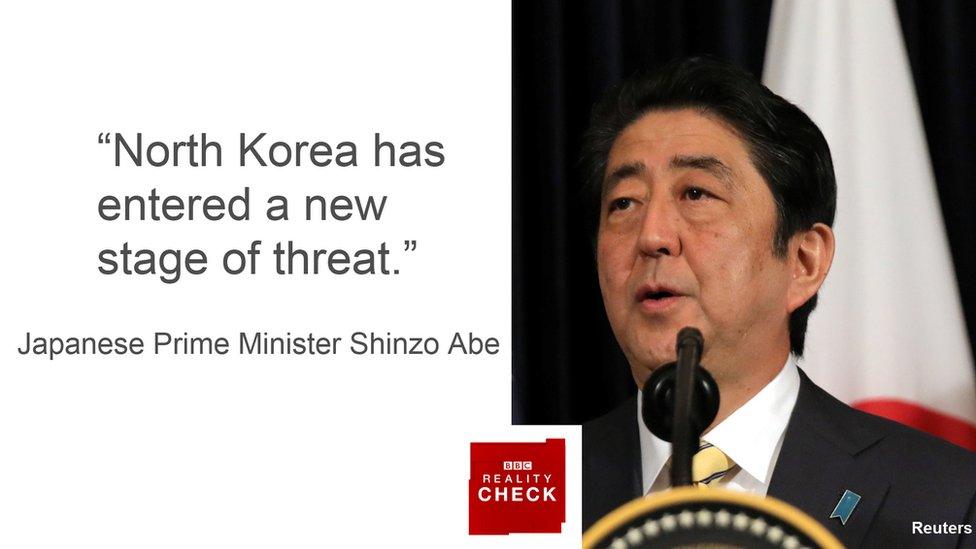
The claim: North Korea's military threat to its neighbours and the rest of the world has reached a new level after the country fired four ballistic missiles towards the Sea of Japan.
Reality Check verdict: The military threat from North Korea to its neighbours has increased, even if the technology used to launch the missiles might not be new.
On 6 March North Korea launched four ballistic missiles towards the Sea of Japan. Three of them fell into what Japan considers its exclusive economic zone (EEZ) - a 200-nautical mile area off Japan's coast - after flying an estimated 1,000km (620 miles).
The launches defy UN resolutions that ban North Korea from any use of ballistic missile technology.
Japanese Prime Minister Shinzo Abe told the Japanese parliament that the launch "clearly shows North Korea has entered a new stage of threat". He said he would call a meeting of the country's National Security Council.
This is the second time that North Korean missiles have landed in Japan's EEZ. In August last year, North Korea fired a ballistic missile directly into Japan's EEZ for the first time, as part of a series of more than 20 missile launches it carried out in 2016.
Pyongyang's missile programme has progressed over the last few decades from tactical rockets in the 1960s and 70s, to short-range and medium-range ballistic missiles in the 1980s and 90s. Systems capable of even greater ranges are now understood to be under research and development.
It is not yet possible to say what type of missiles North Korea fired into the Japanese EEZ. North Korea is likely to release a statement as well as photos and video recordings of the launches on Tuesday.
Mark Fitzpatrick, executive director of the International Institute of Strategic Studies-Americas says that the most likely missiles would be either Nodongs or extended-range Scuds, both medium-range missiles, capable of reaching South Korea and much of Japan, including US bases in Okinawa.
He points out that both are proven systems, and therefore do not represent significant breakthroughs in North Korea's missile capabilities, but adds that "launching four in rapid succession shows remarkable operational skill".
North Korea is believed to have test-fired Nodongs in 2006, 2009, 2014 and 2016, but it is not possible to determine the true scope of success of these tests because we do not know what the targets were.
The country is developing a long-range missile, which, if successfully launched and with its maximum estimated range, could put Australia and parts of the US, among other countries, within range. North Korea is also not hiding the fact that it has an active nuclear-weapons programme. It has carried out five nuclear tests so far, the most recent one in September 2016.
The timing of the latest launch coincides with the annual joint US-South Korea military exercise, which started last week. The North Korean military, in a statement carried by the KCNA news agency, called the exercises "dangerous nuclear war drills against the DPRK at its doorstep".
Mark Fitzpatrick says the timing of today's test was political in nature, primarily as a defiant response to the military exercise at North Korea's border.
Although it is unlikely that the missiles launched represent a significant advancement in North Korea's missile technology, the fact that four were launched and three of them reached Japan's EEZ marks a significant increase in tension between North Korea and its neighbours.



- Published6 March 2017
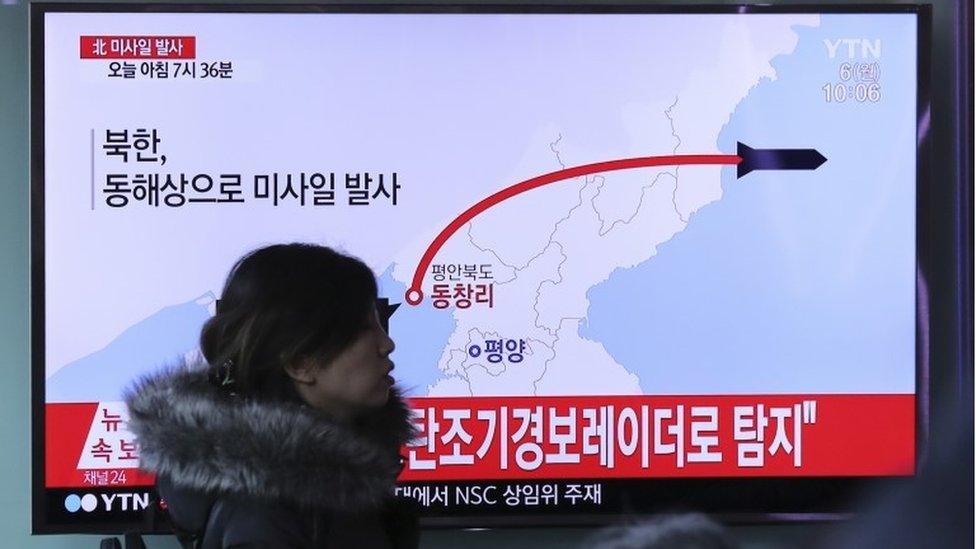
- Published14 February 2017
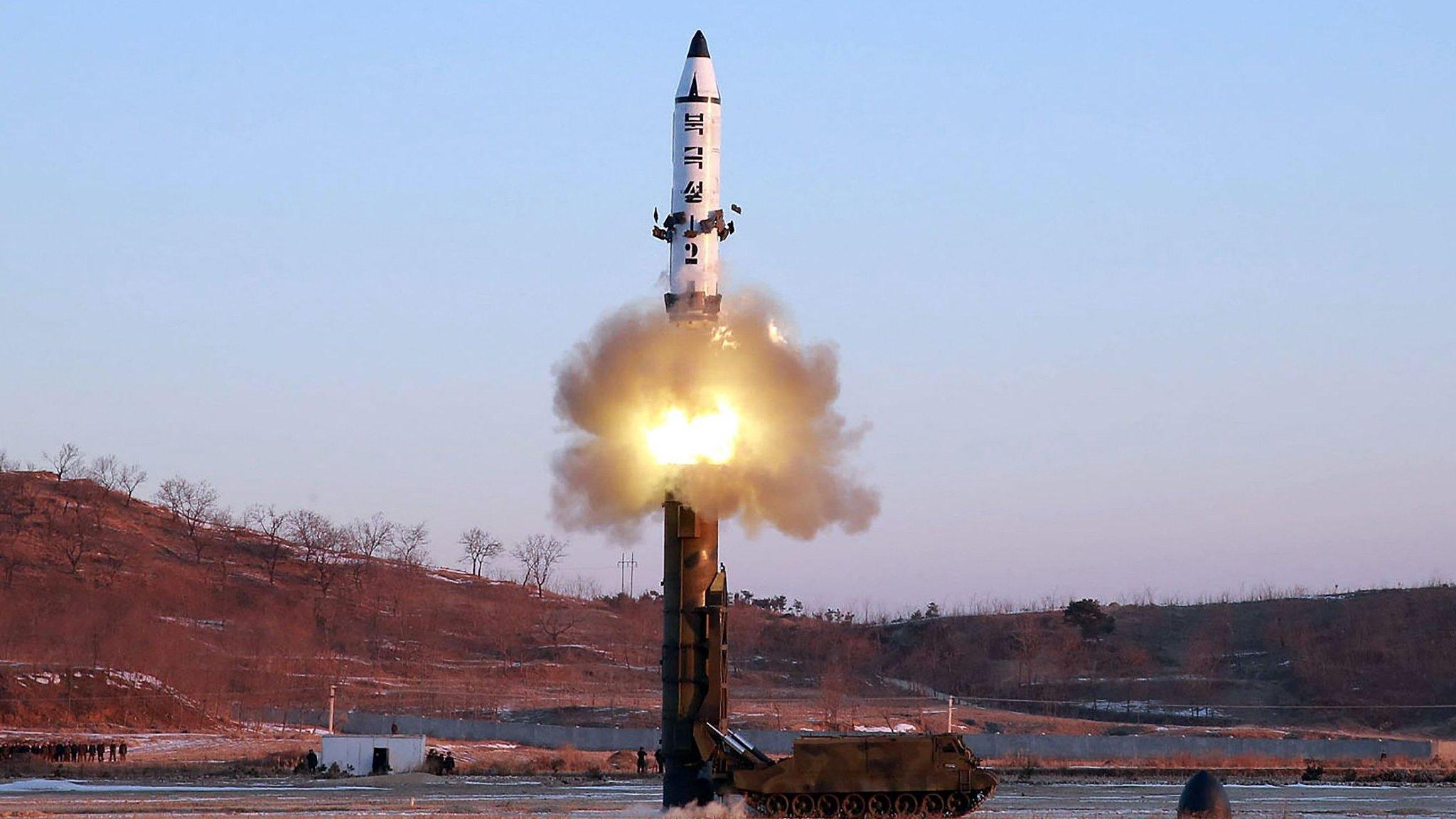
- Published13 February 2017
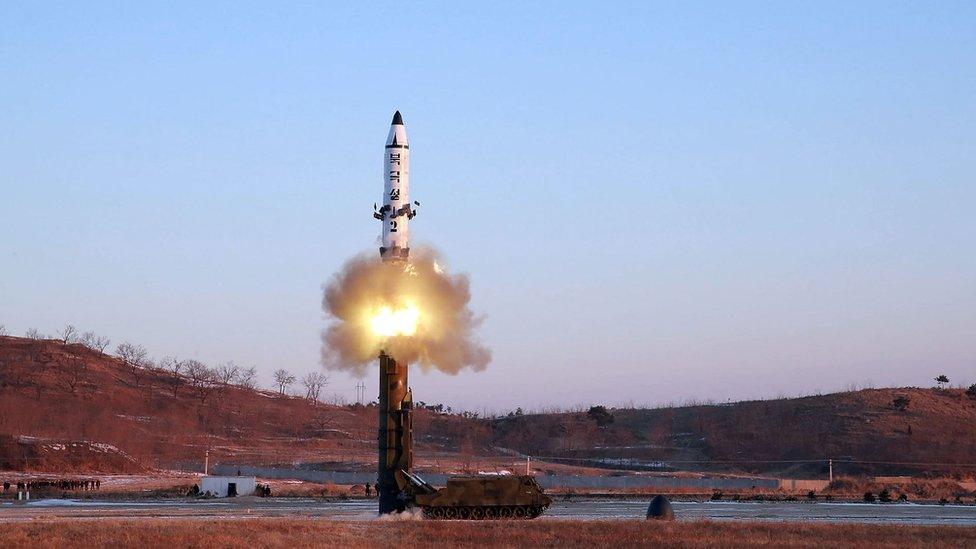
- Published10 August 2017
